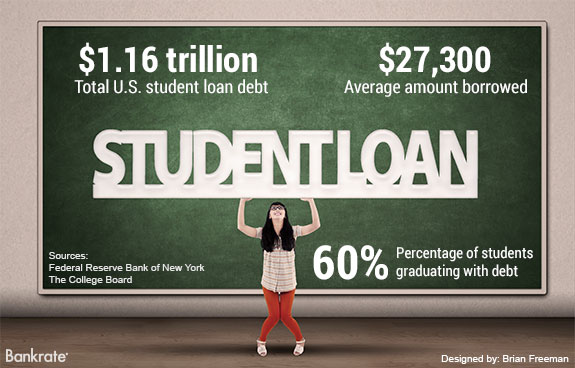A few weeks back I was working on a purchase loan that was submitted to underwriting for review, nothing out of the ordinary at first, the borrowers had great credit, long term jobs, and a solid down payment. After review of the loan the borrower had one issue with a DTI that was over (48%) but seemed workable when I completed the complete underwrite. I called the loan officer and we were able to get the borrower high debt ratio down to an approval range by a hair (44.72% back end DTI conventional loan). Sounds pretty routine right? The solution to get the ratio down to 44.72% had to do with getting an updated payment letter on the student loan to show a lower amount to make that deal work. When I was double checking the allowable documentation for the student loan payments a seemingly simple change in a FNMA rule dated 12/2014 had snuck up and put a real monkey wrench in our best laid plans.
In the December 2014 announcement (remember the one with the big change in self-employed borrowers talking about distribution versus income) in that same announcement was a lessor paid attention to change which was FNMA also announced that the rule for calculating student loans had been changed to the current rules (see below), on my first read through a few months back (before it went to effect on 04/01/2015) it seems like a simple “for undocumented payments use 1% instead of 2%”. But when I re-read the announcement that simple change in percentage is more than just a simple change about undocumented payments in fact it is not about undocumented payments at all.
FNMA B3-6-05 : Monthly Debt Obligations (06/30/2015)
For all student loans, whether deferred, in forbearance, or in repayment (not deferred), the lender must use the greater of the following to determine the monthly payment to be used as the borrower’s recurring monthly debt obligation:
1% of the outstanding balance; or
the actual documented payment (documented in the credit report, in documentation obtained from the student loan lender, or in documentation supplied by the borrower).
If the payment currently being made cannot be documented or verified, 1% of the outstanding balance must be used.
Exception: If the actual documented payment is less than 1% of the outstanding balance and it will fully amortize the loan with no payment adjustments, the lender may use the lower, fully-amortizing monthly payment to qualify the borrower.
So lets take a look at some real math for a conventional loan sold to FNMA!
Example one
Student loan balance of $45,000 shows no payment on the credit report the correct payment to use is the student loan balance x 1% = $450
Example two
Student loan balance of $45,000 payment is $75 per month per the credit report, correct payment to use is $450 NOT $75
Example Three
Borrower provides a payment letter from the credit stating the loan balance is $45,000 and the payment is $113 per month, correct payment to use is $450 NOT $113.
I think example one speaks for itself and that change is the easy one, 2% dropped to 1% calculation. Example two and three are what I want to focus on here. Based on the old FNMA rule since the payment was listed on the credit report you would have used the $75 or based on the letter from the lender in example three you would have used the $113. That is no longer true with the changes by FNMA, the payment needed to qualify in both examples two and three is $450 per month (1%) since that is the greater of the two payments in both examples. As you can see that can make a real difference in the borrower’s debt to income ratio. When you read further down it only allows you to use the payment that is lesser than 1% if you can document the payment listed will fully amortize with no adjustments. Adjustment examples of unacceptable adjustments are graduated payments, interest only, income based repayments, or balloon notes. Bottom line either the loan is fixed at the payment amount and it will pay off 100% OR you can not use it for payments less than 1%.
Back to our borrower and how we helped them. These FNMA changes for student loans actually put the loan DTI up to 60%. Our solution to get this borrower approved was to run the loan using LP since they are still using the documented payment and not the greater of 1% or the documented payment. I hope this story will help make sure you don’t get any last minute turn downs OR repurchase demands on your loans already sold and closed!
One more tip, sometimes you can squeak out that extra income by using a very accurate income calculation (especially to use overtime or bonus) like the income that UberWriter can help you determine. UberWriter will help you push every penny of income possible by giving you accurate and documented information on the borrowers income so you can see where to grab a few extra bucks.
Ok guys that is all for now, we are now posting blogs every week full of tips, tricks, and stories to help you learn more about the underwriting process approve as many files as possible!
Regards
Mike Whitbeck
“The Underwriting Guy”


4 Responses
Great article Mike. Very insightful.
Thanks Joe, glad you found value in the information!
Thanks for posting this article. Clear and detailed.
-Monica
This is fantastic. I do not normally use LP and did not know they are using the payment from the credit report!